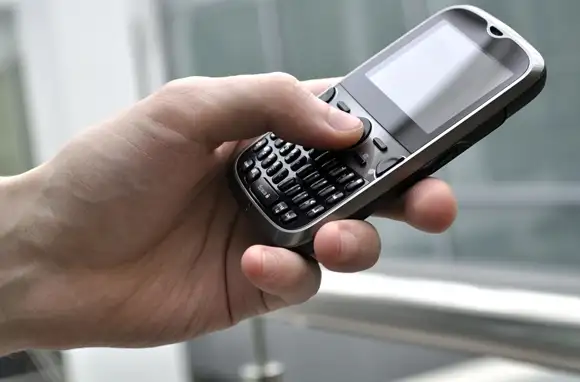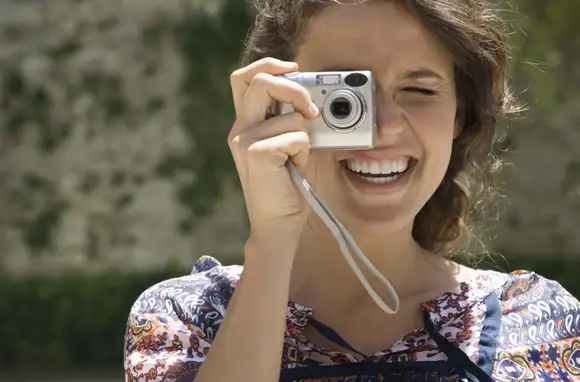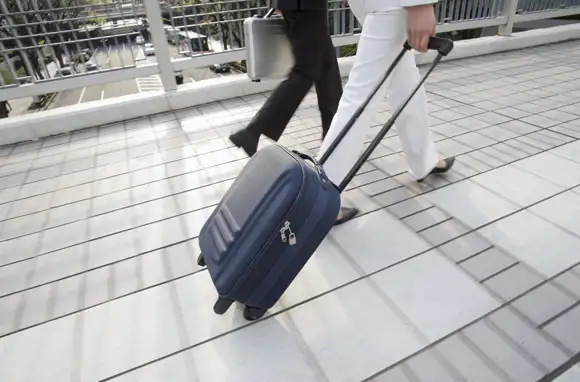Many of the everyday conveniences that ease you through your journeys, from the hotel key card in your wallet to the website where you booked your trip, are responsible for revolutionizing the travel world. These seemingly commonplace goods and gadgets have had an extraordinary impact on the way we see the world—and we can’t imagine hitting the road without them. Find out which 10 breakthrough inventions deserve credit for turning the travel sphere on its head.
Image Gallery

Hotel Key Card
One powerful little piece of plastic has made hotel stays safer and more convenient for travelers. Magnetic key cards started appearing in the 1950s and have since become the standard means of entry at accommodations around the world. On the rare occasion that you're issued a traditional key at check-in (if you're staying at a small B&B or in a vacation rental, for example), you may be reminded of the great advantages of key cards. An unlimited number of copies can be made (one for each of the kids), the card can be replaced in an instant, and lost cards can be erased remotely. Bonus: The card fits neatly into your wallet.

Hotel Key Card
One powerful little piece of plastic has made hotel stays safer and more convenient for travelers. Magnetic key cards started appearing in the 1950s and have since become the standard means of entry at accommodations around the world. On the rare occasion that you're issued a traditional key at check-in (if you're staying at a small B&B or in a vacation rental, for example), you may be reminded of the great advantages of key cards. An unlimited number of copies can be made (one for each of the kids), the card can be replaced in an instant, and lost cards can be erased remotely. Bonus: The card fits neatly into your wallet.

Smartphone
If you want to listen to an audio tour, read hotel reviews, build an itinerary, or take panoramic photos, there's an app for that. (We couldn't resist.) But the best travel advantages offered by the smartphone may be soon to come. Apple has filed a patent on a tool that would allow air travelers to use iPhones to store valid IDs and boarding passes. This technology would work in conjunction with innovative airport security checkpoints that might use facial recognition technology or retina scans along with electronic identification stored on smartphones to move passengers swiftly through checkpoints. Soon, the smartphone could make hard identification, like driver's licenses or passports, obsolete.

Credit Card
Credit cards first appeared on the scene in the 1920s but didn't gain popularity until the 1950s, when Diners Club and American Express issued their first cards. Those early credit cards were made of cardboard, mind you, and we've come a long way since then. Travelers now use credit cards to earn miles, get a more favorable exchange rate, and keep track of spending. But, more importantly, credit cards, with their range of built-in safeguards, are a far more secure alternative to cash and traveler's checks.

Travel Adaptors And Converters
Electrical standardization around the world—or lack thereof—has pretty much been the same since Edison and Tesla were around. The International Electrotechnical Commission (IEC) developed a worldwide standardized electrical plug, but only one country jumped onboard (Brazil). So at present, at least 12 major electric-plug types are widely used around the globe. And only one matches up with your hair dryer. But quite amazingly, two handy little gadgets are all you need to conquer the crazy variations of electrical systems around the world: the humble adaptor and converter. Without these, travelers would need a new set of electronic devices when passing through countries with different standards of electricity.

Digital Camera
While some photographers are still faithful to film, anyone who's packed a suitcase can appreciate the space-saving virtues of the digital camera. With one at hand, we're free to record a nearly endless amount of travel images and, thanks to related digital technology, share them in a snap.
This revolutionary invention is relatively recent. The machine celebrated its 35th birthday in 2010. During the '70s, the first fully digital camera took 23 seconds to record a photo, which it saved on a cassette tape. (No word as to whether engineers used a pencil to rewind the tape.) Early commercially available models were clunky and expensive, to say the least. Kodak's original Digital Camera System cost $20,000 in the early '90s and required a hard-disk storage system. But over the years the cameras became tinier, sharper, and, luckily for travelers, considerably more budget-friendly.

Travel Insurance
The only comprehensive safeguard against Murphy's Law for travelers (anything that can go wrong on your trip will go wrong), travel insurance has been saving globetrotters from the trip-ruining effects of defaulting airlines, hurricanes, illness, lost bags, and civil unrest for nearly a century. Some history: Aircraft liability insurance was first offered by Travelers Life & Annuity back in 1919. To date, about 30 percent of travelers (and 70 percent of the cruising set) insure their trips.

Online Travel Booking
In the mid-1980s pockets of travelers began booking trips on home computers via a reservations system called Easy Sabre. But the trend took longer to reach the mainstream travel community, as early online booking systems, which required manual command prompts and featured daunting walls of code, were not exactly easy to use. When Expedia (launched by Microsoft) and Travelocity (a subsidiary of Sabre Holdings) threw their hats into the ring in 1996, fewer than 1 percent of travelers used the Web to book trips.
The less confusing it became to compare fares and purchase a ticket online, the more travelers moved away from brick-and-mortar agencies and began flocking to the Web. Of course, travel agents can offer services unmatched by any computer booking system: chiefly, personalized customer assistance provided by a fellow human being. Still, the power to quickly and easily research flight times and fares, purchase tickets, investigate hotel availability, and more has transformed the way we plan and book trips.

Global Positioning System
Navigtion—especially when maneuvering roads in foreign lands—got a whole lot easier once Global Positioning System (GPS) technology became affordable and accessible for most travelers. First developed for military use, GPS, in concert with mapping software, is now commonly used in rental cars, on smartphones, and even on bikes. GPS devices rely on uploaded maps to calculate routes, and signals transmitted by a network of satellites that orbit the earth allow the device to gauge where you are and how fast you're traveling. It's a complex system that's provided a solution to a simple age-old question: Should we stop and ask for directions?

Wheeled Luggage
Wheeled luggage celebrated its 40th birthday in 2010, marking four decades of salvaged arm muscles and rescued backs. It can be difficult to imagine that it took until the 1970s for a traveler to scrutinize those heavy, boxy suitcases and decide to stick some wheels on the bottom. The person who did just that is Bernard D. Sadow, former vice president of U.S. Luggage (parent company of Briggs & Riley). Sadow, who holds United States patent No. 3,653,474, titled "Rolling Luggage," said he spotted a skid with wheels as he was lugging a pair of heavy suitcases with his wife and a light bulb went off.

Jet Engine
Cars, trains, and ships are certainly some of the most important travel inventions of all time. But only one machine—the airplane—makes it possible for a traveler to cross oceans in a matter of hours.
But early piston-driven propeller planes didn't have what it took to get passengers from departure to destination in a cost-effective, timely manner. Plus, flying in one was a pretty noisy and uncomfortable experience. Planes had to stop and refuel frequently, cabins were not pressurized, and on some flights passengers had to wear helmets and goggles. Furthermore, only the very wealthy could afford to fly.
Once jet engines became the standard for commercial aviation, more affordable and wildly faster travel became possible—and those passenger helmets became a thing of the past. One of the first commercial jet-engine flights, a Pan Am trip from New York to London, took off in 1958, ushering in what many call the "golden age" of commercial air travel.
What are your all-time favorite travel inventions?
More from SmarterTravel:
- World’s Most Popular Tourist Attractions
- 10 Things You Should Never Pack in Your Checked Bag
- World’s Most Unusual Beaches
Editor’s note: This story was originally published in 2012. It has been updated to reflect the most current information.
We hand-pick everything we recommend and select items through testing and reviews. Some products are sent to us free of charge with no incentive to offer a favorable review. We offer our unbiased opinions and do not accept compensation to review products. All items are in stock and prices are accurate at the time of publication. If you buy something through our links, we may earn a commission.
Related
Top Fares From Indianapolis, IN
Today's Top Travel Deals
Brought to you by ShermansTravel
Shop and Save with Country Inns...
Patricia Magaña
 Hotel & Lodging Deals
Hotel & Lodging Deals
$229 -- Chicago: Discounted Rates and...
Francesca Miele
 Hotel & Lodging Deals
$229+
Hotel & Lodging Deals
$229+
$188 -- Honolulu: Save on Oceanview...
Abigail Lamay
 Hotel & Lodging Deals
$188+
Hotel & Lodging Deals
$188+




